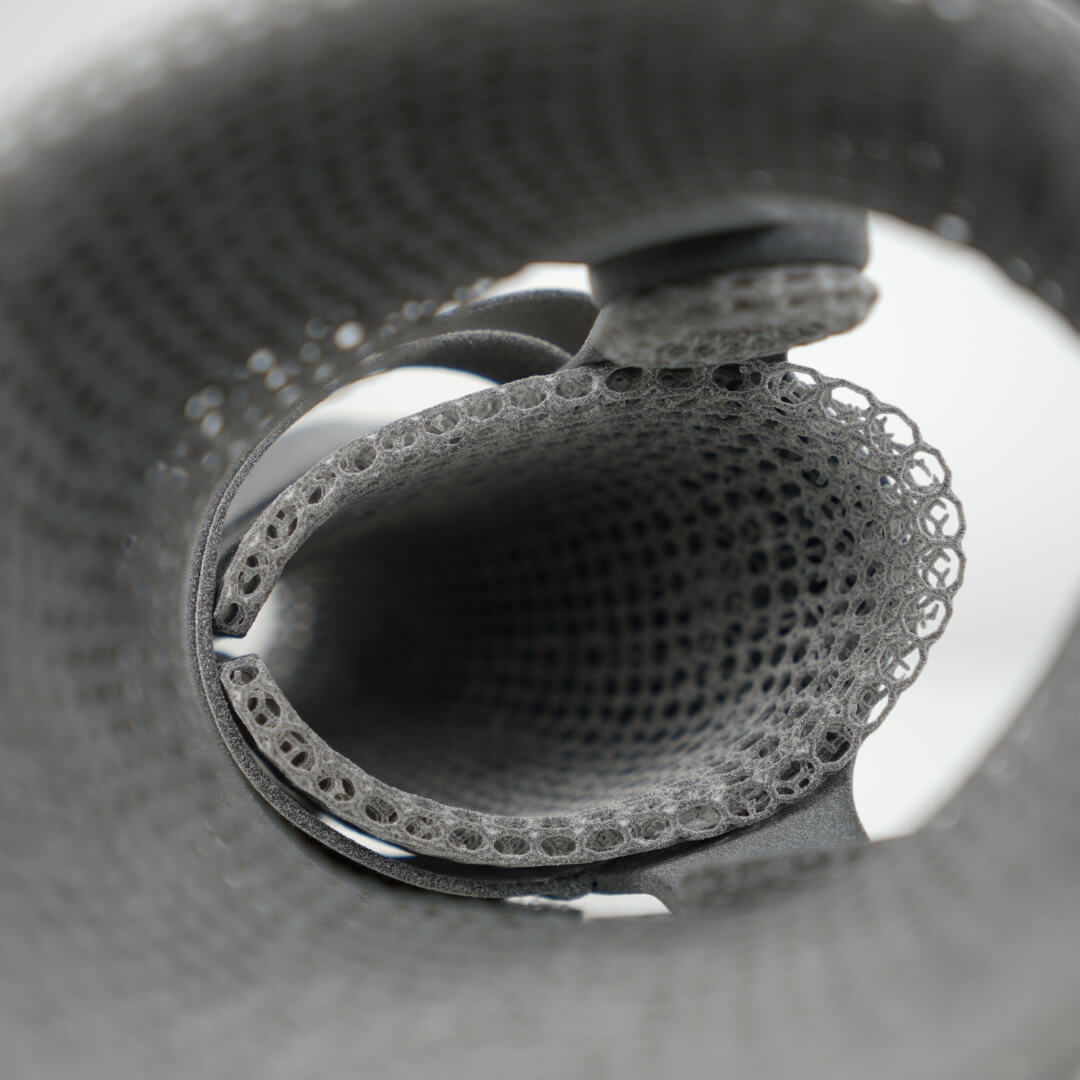Ensuring the best possible care for pets is always a top priority. At WIMBA, we understand the critical role that comfort and support play in the recovery process for dogs or cats needing orthotics. Today, we’ll delve into the specifics of the inserts used in our orthotics, crafted from BASF Forward AMs Ultrasint® TPU01 material, and explore why this material is a game-changer in veterinary orthotic solutions.
What Are Inserts?
Inserts are 3D printed elastic cushions designed to fit inside WIMBA orthotic devices. These inserts are specifically crafted to provide optimal comfort and fit wearing the WIMBA braces. Utilizing advanced lattice structures, these inserts conform perfectly to the dog’s limb, ensuring a snug, glove-like fit that enhances the healing experience by making it both comfortable and secure.
The Material Behind the Magic: BASF Forward AMs Ultrasint® TPU01
The material used for printing these inserts is Forward AMs Ultrasint® TPU01. This lightweight and durable thermoplastic polyurethane (TPU) offers several key advantages that make it ideal for canine recovery.
Parts produced with Ultrasint® TPU01 have a well-balanced set of properties, including excellent flexibility and shock absorption, and the capability to print highly detailed fine structures. Additionally, the material is user-friendly for printing and exhibits strong resistance to UV light and hydrolysis. Ultrasint® TPU01 is compatible exclusively with HP Multi Jet Fusion printers (source).
Comfort and Support
Ultrasint® TPU01 is engineered to be flexible and breathable, enhancing overall comfort for the dog. The material’s lattice structure reduces pressure points and allows for better airflow, preventing excessive sweating and potential skin irritations.
Individually generated lattice structures are customized to accommodate changes in limb volume during recovery. By distributing pressure evenly, these lattice structures help prevent pressure sores, a common issue in rigid orthotics.
Additionally, there is the possibility to include a notch for the Achilles tendon in the design, ensuring that the orthotic accommodates this sensitive area without causing discomfort or additional stress.
Safety and Biocompatibility
Ultrasint® TPU01 meets various regulatory standards, including ISO 10993 for biocompatibility (source). This certification ensures that the material is non-toxic and safe for skin contact, validating its suitability for medical and veterinary applications.
Ease of Maintenance
One of the standout features of Ultrasint® TPU01 is its smooth surface, which makes it easy to clean and sterilize. This helps lower the risk of infection or complications during the recovery phase, especially crucial for dogs that spend time outdoors and are prone to coming into contact with dirt and bacteria.
Customization and Agility in Production
Utilizing Ultrasint® TPU01 in 3D printing allows for highly customized and agile production processes. The automated nature of this technology enables faster production times, ensuring timely delivery of inserts essential for a dog’s recovery. The lattice structures used reduce the insert’s overall weight while allowing for rapid prototyping, facilitating quick iterations and adjustments to meet the specific needs of each dog.
Precision and Tailored Fit
To produce custom-made pet orthotics, WIMBA utilizes HP Multi Jet Fusion (MJF) 3D printing technology. MJF technology allows for high precision in creating customized designs tailored to the unique anatomical features of each dog. This precision ensures a perfect fit, enabling efficient prototyping and on-demand manufacturing capabilities.
The combination of Ultrasint® TPU01 and MJF technology meets various regulatory standards, including ISO 10993 for biocompatibility, providing complete assurance of the material’s suitability for orthotic devices. This method also supports a more sustainable manufacturing process by minimizing material waste and reducing overall production costs.
Advanced Material Choices for Pet Orthotics
In addition to utilizing Ultrasint® TPU01 for inserts, WIMBA orthotics incorporate other advanced materials to enhance performance:
- HP High Reusability PA 11: Used to produce the rigid frame of the orthotics, this material offers robust support and stability.
- HP High Reusability PA 12: Employed for the tokens and hinge caps, PA 12 is crucial for adjusting the range of motion and resistance in the orthotics.
These materials are carefully chosen to provide a physiological range of motion while maintaining functional stability. Some components can be easily upgraded or replaced over time, allowing veterinarians to tailor the orthotic’s performance to the pet’s evolving needs.
Conclusion
The use of BASF Forward AMs Ultrasint® TPU01 and other advanced 3D printing materials, combined with HP Multi Jet Fusion technology, ensures that WIMBA orthotics provide comfort, support, and customization of braces for pets. This approach not only improves recovery outcomes for pets but also supports the efficiency and effectiveness of veterinary practices.
Stay tuned for more insights into the materials and technologies that make WIMBA orthotics a superior choice for pet recovery.
Interested in learning how these innovations can benefit your practice?
Contact us today to find out more about WIMBA’s custom orthotic solutions and how they can enhance the care you provide to your patients.
Sources:






